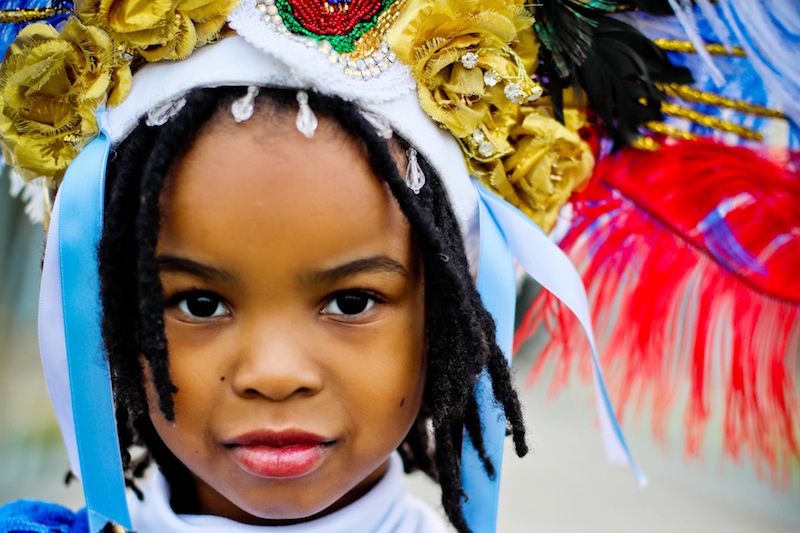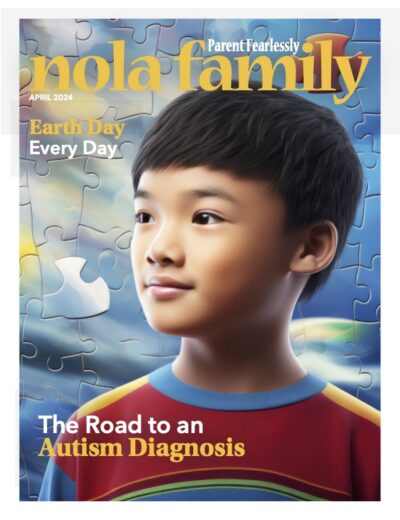
Celebrating the New Orleans Tricentennial with Mardi Gras Indians
In this first issue of 2018, and on our cover, we celebrated our city’s heritage with a nod to the Mardi Gras Indians, organizations almost as old as the city itself.
Here we give a brief overview of who and what they are, and their importance to this day to who we are.
In the early 1700s, Jean-Baptiste Le Moyne, Sieur de Bienville made his way to Louisiana, soon establishing Mardi Gras traditions in our area as well as the first recorded African slaves. At first the French Colonials attempted to enslave the local Native Americans, but weren’t successful as they could easily escape back to their own communities, familiar with the land and hostile terrain. Thus, Africans were brought over as escape to a new and unfamiliar environment proved much more difficult for them. Soon, though, as the enslaved Africans escaped, they were helped in no small part by local Native American tribes such as the Choctaw, Seminoles and Chickasaws. These Native Americans would help guide them away from plantations and, with their help, these Africans learned to survive off the land and in the forest camps known as Maroon Camps (small hidden communities not far from the city). Often local Indians accepted slaves into their society, allowing them to live and marry within the tribes.
By the 1740s, Congo Square (now Louis Armstrong Park) was formed as a place where slaves would gather by the hundreds on Sunday afternoons to sing folk songs, play music and dance in their traditional style. The idea of letting loose and embracing traditional African music and dance is a backbone of the Mardi Gras Indians practice.
By 1746, records indicate slaves were costuming as Indians as they began to celebrate Mardi Gras in their own unique way. The support of the Native Americans was never forgotten, and Mardi Gras Indian tribes are named to honor them.
The tradition of the Mardi Gras Indian began.
Today, each year for Carnival season, neighborhood-based tribes of Mardi Gras Indians appear on the streets on specific days in elaborate, hand-sewn suits of the finest beads and feathers, confronting other tribes in ritualistic encounters that involve chanting, dancing and competition for the “prettiest” suits. Their fantastic costumes are unforgettable creations which constitute some of the best folk art in America. Worn only once, the costumes take a full year to create, with hundreds of thousands of beads, brightly dyed ostrich plumes, sequins, velvet and rhinestones sewn on by hand – often weighing more than 100 pounds. These suits will often costs thousands of dollars to create and are works of art, symbolizing each tribe.
As the processions begin, the Indians dance and sing traditional songs particular to their gang. The ‘Big Chief’ decides where the group will parade; a different route each time. There are spyboys, flagboys, and wildmen, each with a distinct and different role to play. When two tribes come across each other, they either pass by or meet for a symbolic fight. Each tribe lines up and the Big Chiefs taunt each other about their suits and their tribes. The drumbeats of the two tribes intertwine, and the face off is complete. Both tribes continue on their way.
Many thanks to Crane Rehab Center, our Tricentennial Cover Sponsor:
On the Cover of Jan/Feb issue (and featured above):
One such recipient of this unique cultural practice is four-year-old Ariya Karo Kaba Smith. 2017 was her fourth year masking Indian. She is the daughter of Tiffani Tiranke Kaba Sheriffa and Gian Francisco Smith. In 2014, she masked with the Young Guardians of the Flame Maroon Society as a Baby Princess for the first time.
The Little Princess’ Blue Baby Blues headdress features the tribe’s logo, a beaded patch depicting the continent of Africa with a Sankofa bird in the center. The headdress and suit are the creation of Roslyn Johnson Smith of New Orleans, Ariya’s paternal grandmother. Roslyn is the co-founder of the Mardi Gras Indian Hall of Fame with Cherice Harrison-Nelson.


